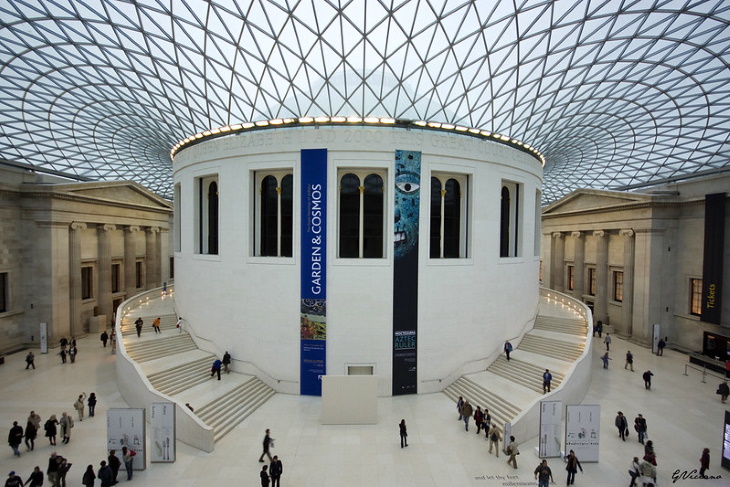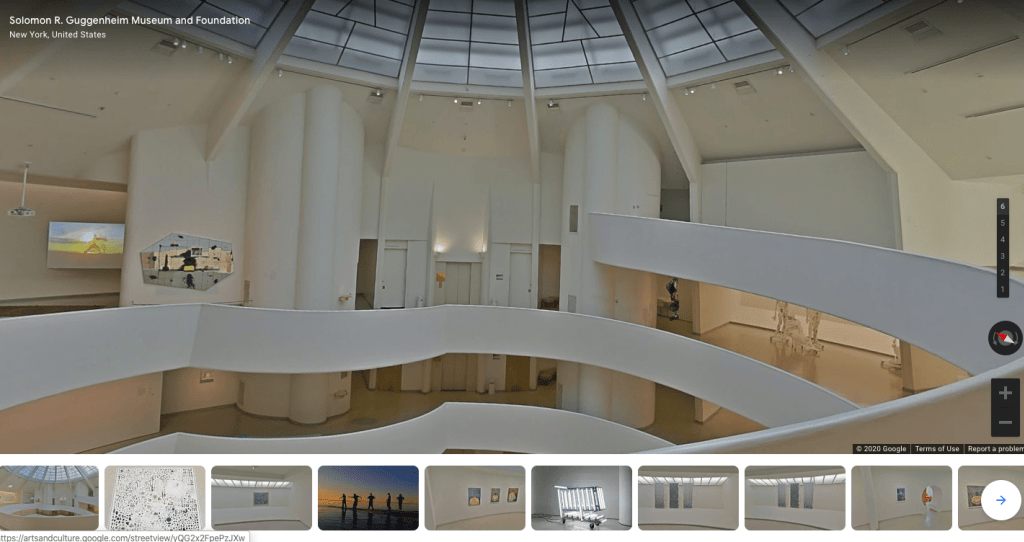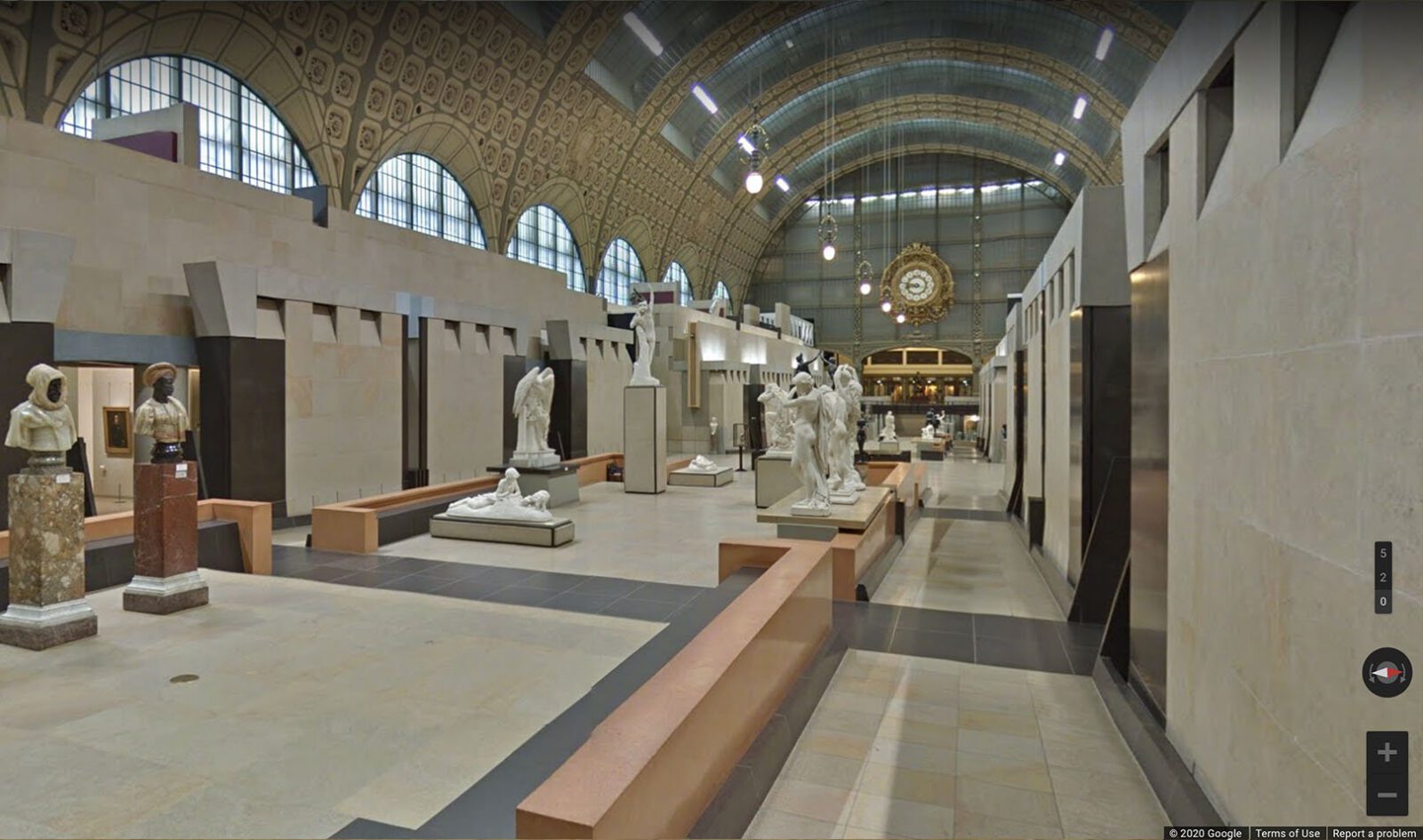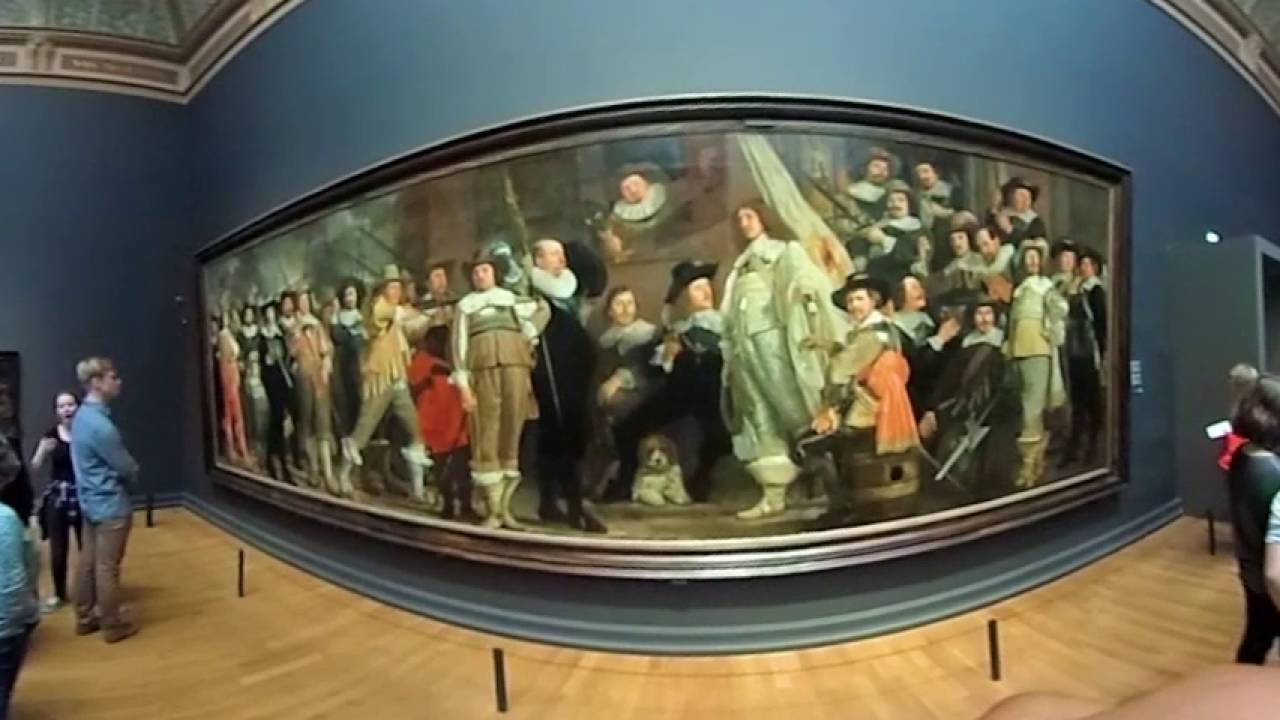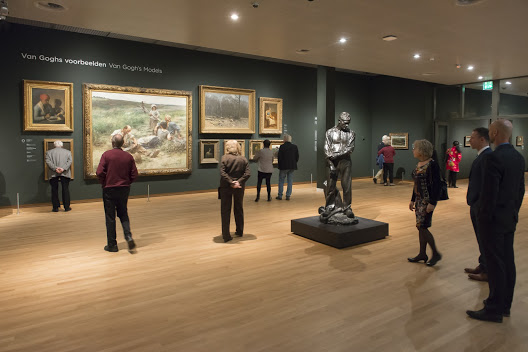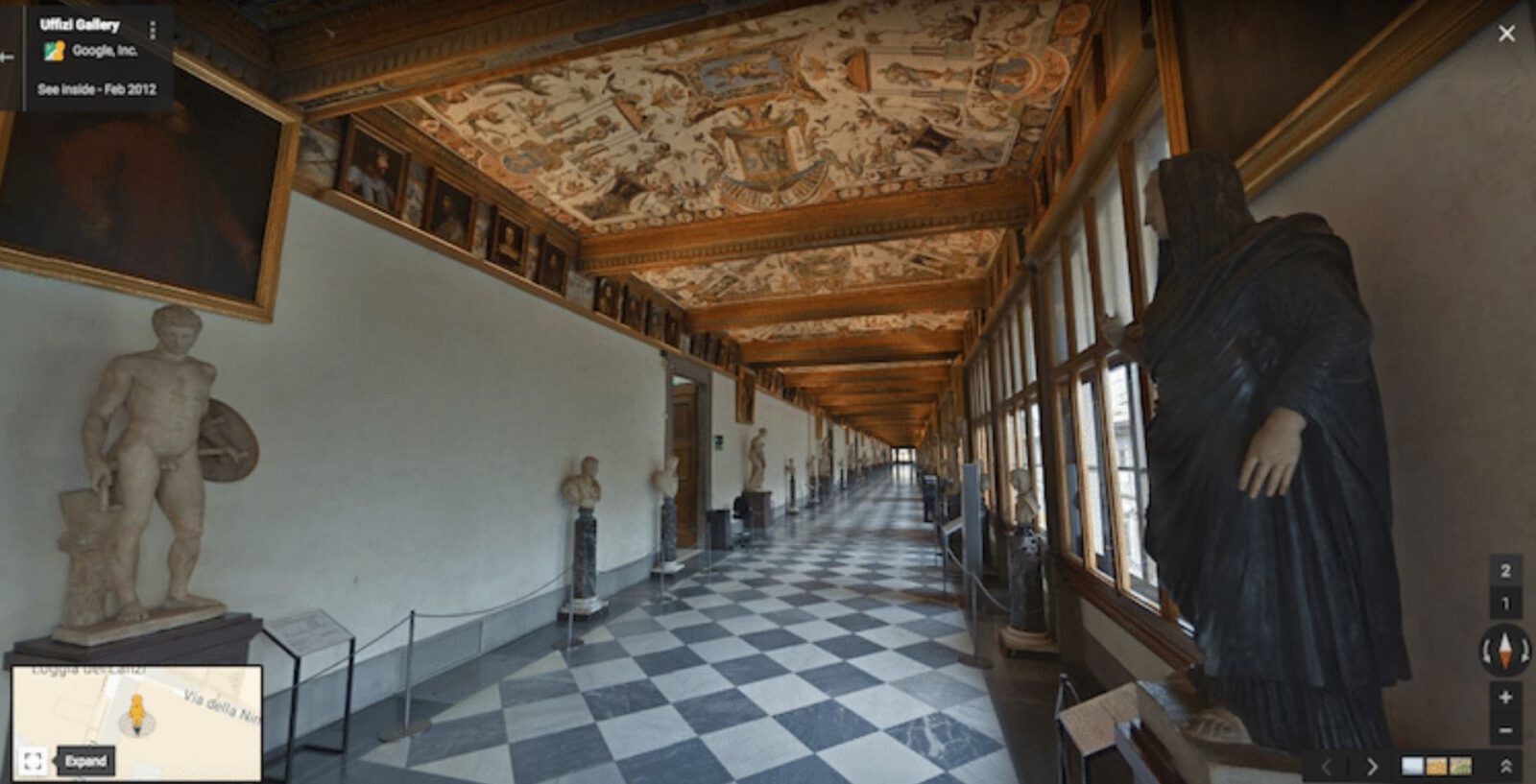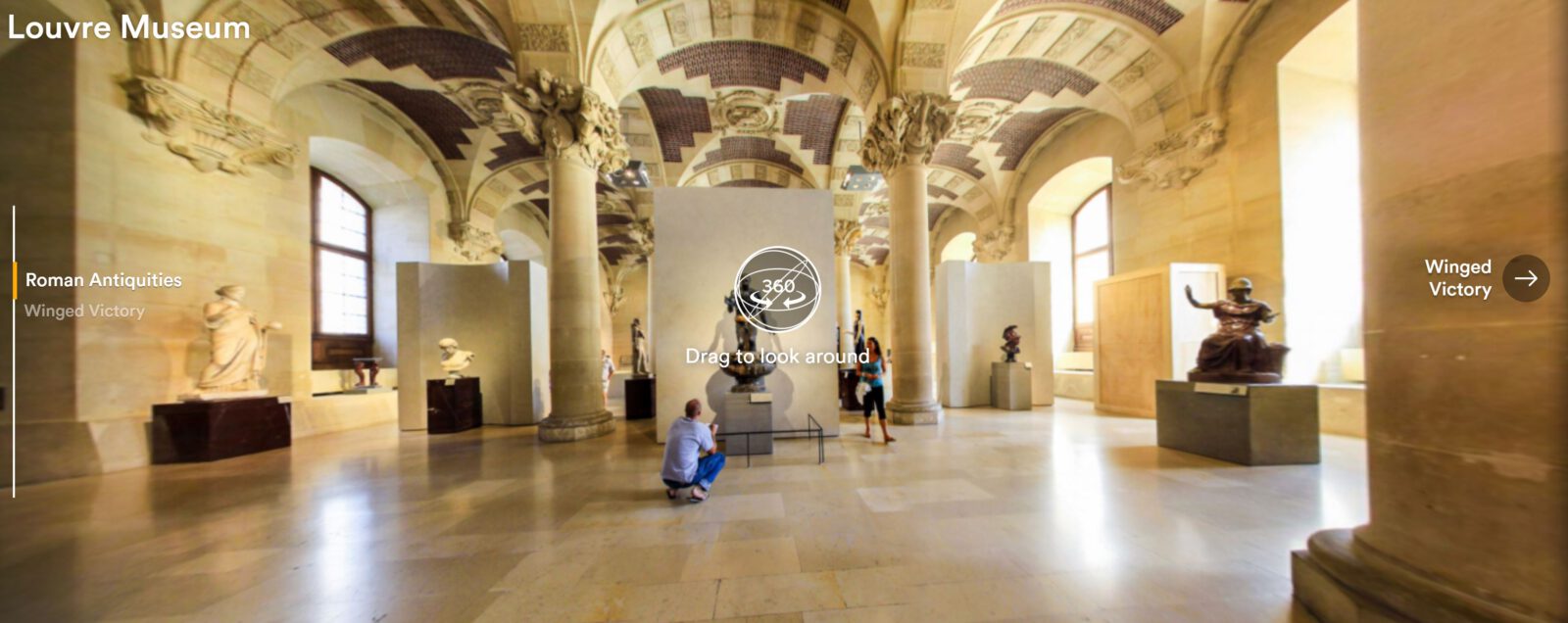#Stayhome and enjoy a virtual tour in some of the most famous museums around the world.
The following interactive online maps, image galleries and banks of 3D scans of the artefacts invite art enthusiasts to explore some amazing pieces of world history with unprecedented access and ease.
1. British Museum, London
The British Museum is the first national public museum of the world.
As part of its very large website, the museum has the largest online database of objects in the collection of any museum in the world, with 2,000,000 individual object entries, 650,000 of them illustrated, online at the start of 2012. There is also a “Highlights” database with longer entries on over 4,000 objects, and several specialised online research catalogues and online journals (all free to access). In 2013 the museum’s website received 19.5 millions visits, an increase of 47% from the previous year.
The collection of the British Museum contains famous objects on display such as the Rosetta Stone and the classical Greek sculptures.
2. Guggenheim Museum, New York
The Guggenheim Museum in New York, designed by Frank Lloyd Wright, is an internationally renowned art museum and one of the most significant architectural icons of the 20th century. The Solomon R. Guggenheim Museum is arguably the most important building of Wright’s late career. A monument to modernism, the unique architecture of the space, with its spiral ramp riding to a domed skylight, continues to thrill visitors and provide a unique forum for the presentation of contemporary art. In the words of critic Paul Goldberger, “Wright’s building made it socially and culturally acceptable for an architect to design a highly expressive, intensely personal museum. In this sense almost every museum of our time is a child of the Guggenheim.”
Visitors can experience special exhibitions of modern and contemporary art, lectures by artists and critics, performances and film screenings, classes for teens and adults, and daily tours of the galleries led by museum educators. Founded on a collection of early modern masterpieces, the Guggenheim Museum today is an ever-evolving institution devoted to the art of the 20th century and beyond.
Founded in 1937, the Solomon R. Guggenheim Foundation is dedicated to promoting the understanding and appreciation of art, primarily of the modern and contemporary periods, through exhibitions, education programs, research initiatives, and publications. The Guggenheim network that began in the 1970s when the Solomon R. Guggenheim Museum, New York, was joined by the Peggy Guggenheim Collection, Venice, has since expanded to include the Guggenheim Museum Bilbao (opened 1997), and the Guggenheim Abu Dhabi (currently in development). Looking to the future, the Guggenheim Foundation continues to forge international collaborations that take contemporary art, architecture, and design beyond the walls of the museum. The Foundation is also committed to fostering research, exhibitions, and collections in the field of global art through such programs as the Asian Art Initiative (founded in 2006), the Guggenheim UBS MAP Global Art Initiative (founded in 2013), and The Robert H. N. Ho Family Foundation Chinese Art Initiative (founded in 2013). More information about the Foundation can be found at guggenheim.org.
You can explore online the exhibition “But a Storm Is Blowing From Paradise: Contemporary Art of the Middle East and North Africa”, which investigates themes such as movement, migration, architecture, and the process of uncovering hidden ideas or “conceptual contraband.” Through painting, drawing, sculpture, installation, and video, But a Storm Is Blowing from Paradise: Contemporary Art of the Middle East and North Africa presents a spectrum of artistic voices and critical concerns from a rapidly evolving region.
3. Musée d’Orsay, Paris
The history of the museum, of its building is quite unusual. In the centre of Paris on the banks of the Seine, opposite the Tuileries Gardens, the museum was installed in the former Orsay railway station, built for the Universal Exhibition of 1900. So the building itself could be seen as the first “work of art” in the Musee d’Orsay, which displays collections of art from the period 1848 to 1914.
“The station is superb and looks like a Palais des beaux-arts…” wrote the painter Edouard Detaille in 1900. Eighty-six years later, his prophecy was fulfilled.
The transformation of the station into a museum was accomplished by ACT architecture group, made up of M. Bardon, M. Colboc and M. Philippon. Their project was chosen in 1979 out of six propositions, and would respect Laloux’s architecture while nonetheless reinterpreting it according to its new function. The project highlighted the great hall, using it as the main artery of the visit, and transformed the magnificent glass awning into the museum’s entrance.
4. Pergamon Museum, Berlin
The Pergamonmuseum was designed by Alfred Messel; its construction was overseen by Ludwig Hoffmann and lasted twenty years, from 1910 to 1930. A smaller building initially stood on the same site for a just few years before being torn down.
It housed the important excavation finds unearthed by the Berlin museums, such as the frieze panels from the Pergamon Altar, reclaimed from the earth in digs that lasted from 1878 to 1886. Inadequate foundations, however, soon resulted in the building becoming structurally unstable and it had to be demolished.
The new, larger Pergamonmuseum was built as a three-wing complex. The museum now houses three of the Staatliche Museen zu Berlin’s collections: the Antikensammlung, Vorderasiatisches Museum, and the Museum für Islamische Kunst. The impressive reconstructions of massive archaeological structures – the Pergamon Altar, Market Gate of Miletus, the Ishtar Gate and Processional Way from Babylon, and the Mshatta Facade – have made the Pergamonmuseum famous throughout the world, with the result that it is the most visited museum at the Staatliche Museen and in Germany as a whole.
5. Rijksmuseum, Amsterdam
As a national institute, the Rijksmuseum offers a representative overview of Dutch art and history from the Middle Ages onwards, and of major aspects of European and Asian art. Its world-famous masterworks from the Dutch Golden Age include the Milkmaid by Vermeer and Rembrandt’s Night Watch. The Rijksmuseum itself is also a masterpiece. The collection is presented in a stunning building with amazing interior design. In 80 galleries 8,000 objects tell the story of 800 years of Dutch art and history, from the Middle Ages to Mondrian. Every year, over 2.5 million visitors travel through the ages and experience a feeling of beauty and sense of time.
6. Van Gogh Museum, Amsterdam
The Van Gogh Museum in Amsterdam houses the largest collection of artworks by Vincent van Gogh (1853-1890) in the world. The permanent collection includes over 200 paintings by Vincent van Gogh, 500 drawings and more than 750 letters. The museum also presents exhibitions on various subjects from 19th-century art history.
7.Uffizi Gallery, Florence
The Gallery entirely occupies the first and second floors of the large building constructed between 1560 and 1580 and designed by Giorgio Vasari. It is famous worldwide for its outstanding collections of ancient sculptures and paintings (from the Middle Ages to the Modern period). The collections of paintings from the 14th-century and Renaissance period include some absolute masterpieces: Giotto, Simone Martini, Piero della Francesca, Beato Angelico, Filippo Lippi, Botticelli, Mantegna, Correggio, Leonardo, Raffaello, Michelangelo and Caravaggio, in addition to many precious works by European painters (mainly German, Dutch and Flemish).
Moreover, the Gallery boasts an invaluable collection of ancient statues and busts from the Medici family, which adorns the corridors and consists of ancient Roman copies of lost Greek sculptures.
8. The Louvre, Paris
From a medieval fortress to an art museum, the Louvre palace has undergone eight centuries of architectural transformation, making it an embodiment of French history. The Louvre is the world’s most-visited art museum, with a collection that spans work from ancient civilizations to the mid-19th century.
The collection is divided among eight curatorial departments: Egyptian Antiquities; Near Eastern Antiquities; Greek, Etruscan and Roman Antiquities; Islamic Art; Sculpture; Decorative Arts; Paintings; Prints and Drawings.
9. Hermitage Museum, St. Petersburg , Russia
Experience a 5 hr 19 min 28 sec cinematic journey through one of the world’s biggest museums in St. Petersburg, Russia. Take in 45 galleries, 588 masterpieces, and live performances, shot in 4K on iPhone 11 Pro in one continuous take.
10. Metropolitan Museum of Art, New York
The Met 360° Project presents a series of videos captured with a spherical 360° camera rig. The resulting videos offer new and dynamic access to some of the Museum’s iconic spaces with a perspective typically unavailable to the public.
→ View all videos in the series: YouTube 360
READ ALSO: Η Μπιενάλε της Αθήνας ανακοινώνει την έβδομη διοργάνωσή της, με τίτλο ECLIPSE σε συνεπιμέλεια των Omsk Social Club & Larry Ossei-Mensah, υπό την καλλιτεχνική διεύθυνση του Poka-Yio
